5 Underrated Hybrid Chicken Breeds That Are A Joy To Keep
Over the years I’ve raised a lot of different chicken breeds. I almost always buy my chicks and eggs for hatching in assortments. The great thing about having been around so many different breeds is I’ve been able to compare their behaviour, the unique traits they have, egg production, growth rates, and other idiosyncrasies.
I love sharing what I’ve learned along the way, and today we are talking about underrated hybrid chickens. These girls tend to get overlooked in favor of fancier birds with unusual feathering, but I think these prolific layers with great temperaments are worth a second look!
Table of Contents
- Why You Should Consider These Underrated Chicken Breeds for Your Flock
- What Is a Production Chicken?
- What Is a Hybrid Chicken?
- Pros and Cons of Hybrid Chickens
- 5 Underrated Hybrid Chicken Breeds That Are A Joy To Keep
- A Word Of Warning About Rescuing Hybrids from Egg Producing Farms
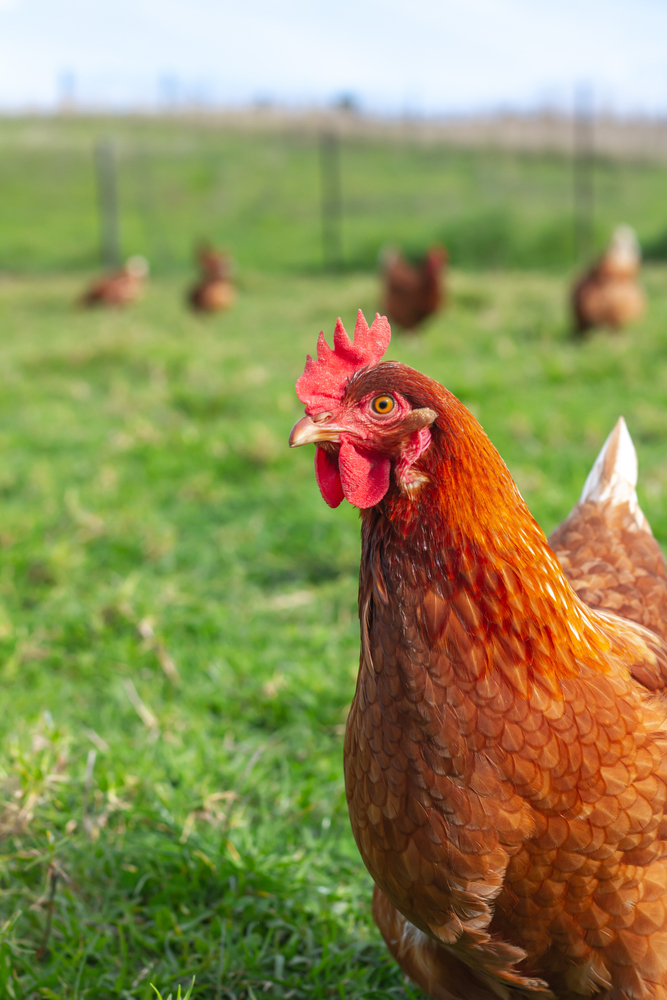
Why You Should Consider These Underrated Chicken Breeds for Your Flock
Many factors go into choosing the right chicken breed for your flock. Picking the best breeds for your own flock will help you to enjoy your chickens and set them up to thrive on your farm. While there are a lot of factors that go into selecting birds for your flock, today we are focusing on disposition, production and availability.
Disposition
These girls are all friendly, sweet and docile around their humans. They are fairly quiet and suited for backyard living.
Production
These chickens are rock star layers, and will give you around an egg a day.
Availability
And finally, these chicken breeds are all usually readily available at your local feed store and hatchery.
What Is a Production Chicken?
As you begin shopping for chickens and researching breeds you will often run across classifications that are intended to describe the chicken, although different suppliers sometimes use different terminology. Because many of the chickens I will be talking about are classified and production chickens I thought we’d clear up the terminology sorrounding chicken classifications. Generally speaking there are 3 different types of chickens;
- Production, sometimes referred to as layers. These birds were created to be ideal in commercial settings, and produce a ton of eggs.
- Meat birds, often referred to as Broilers. These are heavy fast growing birds.
- Dual-Purpose Breeds, also called Heritage Chickens. These breeds are pure bred birds whose genetic line can be traced back multiple generations and are recognized by the American Poultry Association (APA)
Production hens lay better than dual purpose or heritage hens, because they begin laying earlier than, and take fewer rest periods. The key characteristics typically shared by production layers are:
- They begin laying at 4 to 5 months of age.
- They lay nearly an egg a day, year-round.
- They rarely go broody, they just aren’t genetically predisposed to wanting to sit.
- They are bred to convert feed into eggs very efficiently, and often have smaller bodies; therefore they don’t eat as much as their standard counterparts.
- Production chickens are very often hybrids.
What Is a Hybrid Chicken?
Most production birds are actually hybrid chickens that have been developed through selectively cross-breeding the most productive strains of pure-breed layers. The development of hybrid chickens started in the 1950’s when there was a huge increase in demand for eggs and meat. Hybrid chickens are among some of the best chicken laying breeds, and you can expect about an egg a day while they are at peak production.
Hybrids don’t ‘breed true’- meaning the traits these birds were originally bred for will not continue on in succeeding generations. If you did happen to breed a hybrid rooster with a hybrid hen the chicks will likely have recessive genes that will show up from past ancestors, that the parents themselves don’t show. A chick could look completely different from the parent stock, lay different colored eggs, or have a different body shape or plumage because of something that was passed on from a generation or more back.
Pros and Cons of Hybrid Chickens
I am a firm believer anytime you take an animal into your care you should do your due diligence, and research. Just like heritage chicken breeds, hybrid chicken breeds have their benefits and disadvantages. Since all of the chickens on my list of underrated chickens are considered hybrids I just want to take a quick look at the pros and cons of adding hybrid chickens to your flock.
Hybrid Chicken Pros
- Easy to acquire, you can find these girls at feed stores and hatcheries reliably. They are often cheaper than heritage breeds too.
- They are friendly and easy going with humans
- They will mature quickly and begin laying earlier than other breeds
- They will produce a lot of eggs for the first 2 years of their life.
- They are not likely to go broody. If you’ve had to deal with a determined broody hen hogging a nest box you know what a pain they can be.
Hybrid Chicken Cons
- The high level of egg production can take a toll on these girls, leading to shorter lifespans.
- Because they are laying so frequently, they are more likely to develop egg development related problems, such as egg-binding, prolapse and egg-peritonitis.
- While these girls are docile and friendly with humans, they can get a little scrappy with flockmates, and aren’t likely to back down from a pecking order challenge.
- Because of their smaller size, when production wanes harvesting a hybrid isn’t really worth the time or effort.

5 Underrated Hybrid Chicken Breeds That Are A Joy To Keep
This isn’t a complete list of hybrid chickens, but they are easily available and I personally have experience raising them. These favourites were chosen for their friendliness, hardiness, and egg production. If a breed is not as good in one area, it makes up for it in another area.
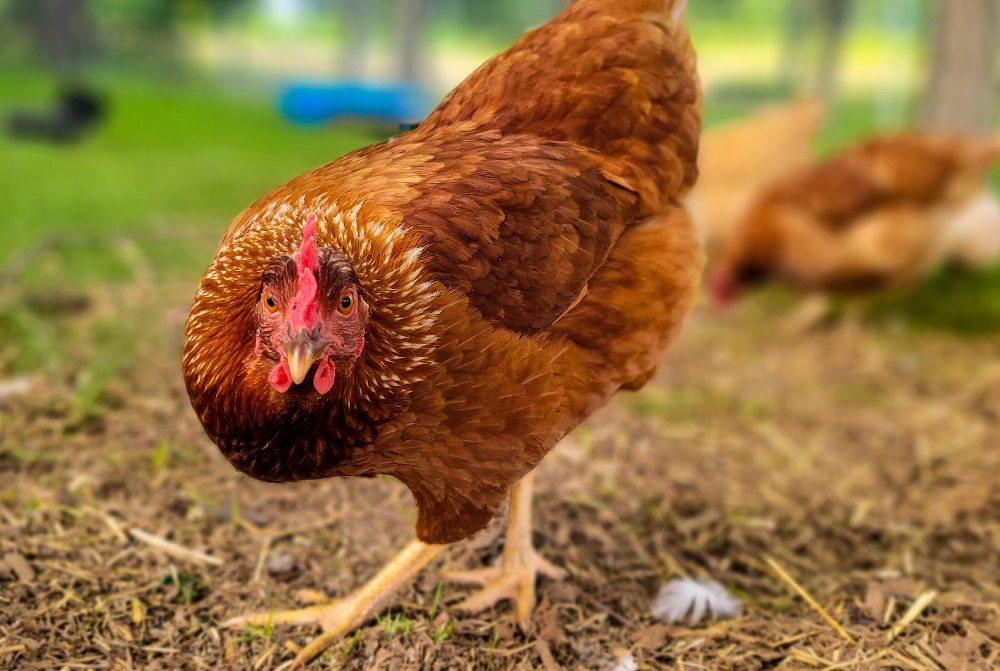
Isa Brown
Isa Browns are a newer addition to the world of hybrid chickens. Originally developed in France around 1978, the ISA stands for Institut de Sélection Animale. Egg production was a high priority for the creators of ISA Browns, but her sweet temperament was undeniable, and the bird who was initially bred for commercial purposes easily found her way into the coops and hearts of backyard farmers.
Their exact genetic make-up is a closely guarded trade secret, but it is thought that Isa Browns are a cross between a Rhode Island Red and White Leghorns.
Isa Browns are what is known as a Red Sex Link Chicken, meaning that they can sexed at day of hatch based on their physical appearance. The males and females are completely different colors, the males are more white while the females are red. This practically guarantees that you will get a pullet!
Isa Browns are classified as small to medium, with a hen weighing in around 5lbs. They produce around 300 eggs a year, and rarely go broody.
In the commercial world Isa Browns are culled in their 2nd year of life because egg production begins to decrease at that point, although she will continue to lay. For the backyard chicken keeper, when you decide to cull your flock is a personal decision. My Isa Browns are well into their 2nd year, and still laying well, and I enjoy them so I have not felt inclined to cull them.
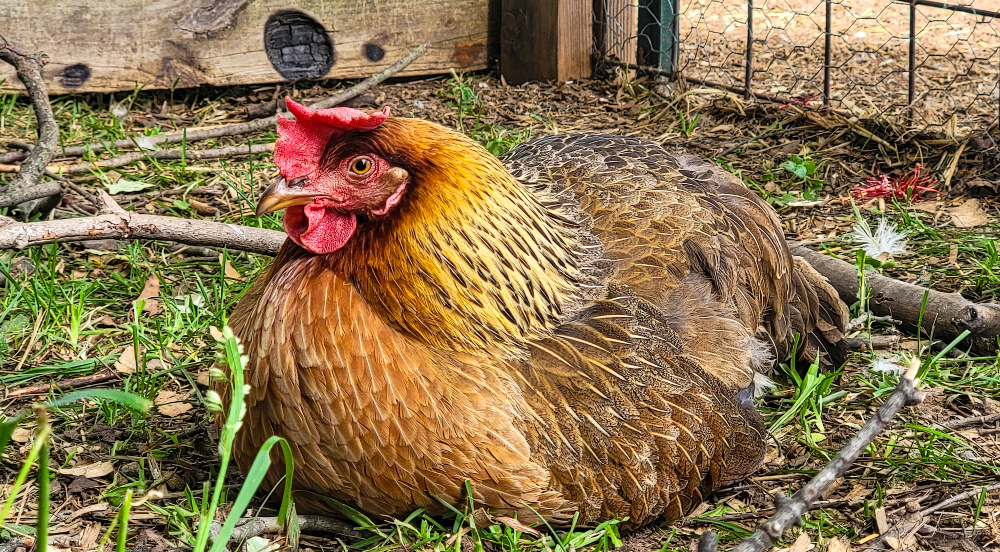
Pearl Star Leghorn
I accidentally stumbled upon this unique breed at Tractor Supply, and honestly they are one of my favorites! These aren’t really leghorns at all, but rather a cross between Partridge Rocks and Sussex. And somewhat of an anomaly amoung hybrids.
Pearl Star Leghorns have a sweet disposition, and striking variegated feathering. In my experience these mild mannered girls can bear the brunt of stronger personalities in the flock, keep a watchful eye out for these girls they tend to get bullied. My Pearl Star Leghorns are among the tamest birds in my flock, and I have one girl who will seek me out, and choose to hang with me instead of her flockmates.
Pearl Star Leghorns are classified as small to medium, with a hen weighing in around 5lbs. They produce around 220-300 large eggs a year. All of the descriptions I’ve read say that Pearl Stars lay cream colored eggs, but my girls definitely lay cream eggs with a hint of pink, they might get that from the Sussex parentage, although I am not sure how reliable that trait may be.
I’ve had several of my Pearl Stars go broody, and they are determined sitters. I hav no idea how maternal these birds are, but I am considering giving them fertile eggs, and will update once I know!

Golden Comets
Another red sex link, the golden comet chickens are usually the result from a mating between a Rhode Island White Hen and a Rhode Island Red Rooster.
The Golden Comet is generally a light/medium reddish-brown, possibly flecked with some white feathers. These birds are actually pretty small compared with the other hybrids on the list, females typically weigh in around 4lb. Their small size and easy going nature makes them perfect if you have kids who want to be involved in daily chicken care. These chickens don’t mind being handled, and are very docile.
These girls are true production birds and can begin laying at 16 weeks of age and continue to be very productive up to around the two-year mark. They lay medium to large brown eggs, and don’t go broody.
My Golden Comets are great foragers, and because of their smaller size they are able to easily fly over my electric fence in search of new places to forage. Clipping their wings would curb this behavior, but they don’t tend to get into too much trouble while they are out, and seem predator savvy, as opposed to my Buff Orpingtons who are oblivious to what’s going on around them .

Easter Eggers
Easter Eggers make a wonderful addition to small backyard flocks as they get along well with children and tolerate being held and cuddled.
This is a hybrid bird that lays blue, green, rose or even brown eggs. It’s impossible to know what color egg your Easter Egger will lay until it lays its first egg. Although the name refers to a holiday basket of colored eggs, your Easter Egger will not lay different colored eggs each time it lays an egg. Whatever color egg it lays first is the color it will continue to lay for a lifetime.
Easter Eggers come in a wide variety of colors and feather patterns. Some have feathered feet, some don’t, some have beards and muffs while others are without them. These girls are truly one of a kind. They don’t lay as much as some of the other birds on this list, but she makes up for it with pretty pastel eggs!

Speckledy aka Speckled Ranger
I love adding hens to my flock who have interesting plumage and the Speckledy definitely adds a splash of color.The Speckled Ranger is a modern-day hybrid and newer addition to the chicken world. These girls are dark grey and white mottled that are created by crossing a pure bred Rhode Island Red rooster with a Marans hen.
Speckledys lay less than some of the other birds on the list, but their eggs are a pretty chestnut brown and often speckled.
They are docile, and like the Pearl Star they tame very easily, making them great pets. They are great foragers and will enjoy a free-range environment.
A Word Of Warning About Rescuing Hybrids from Egg Producing Farms
I have seen several ads locally for older hybrid chickens that are being retired from a laying flock. They are typically right around the 2 year old age mark, and usually sell for $1-$3 each with a large number available. Every farm is different but often these birds have been housed inside and under 24 hour lights so that their egg production isn’t affected by decreasing daylight hours in the winter. The environment and constant state of production takes a significant toll on these birds bodies, usually when they are moved to new farms their immune systems are unable to adjust to the foriegn environment and bacteria, and if they weren’t sickly they become ill shortly after arrival.
Rescued hybrid chickens are usually riddled with health issues, and rarely do well on their new farm and often don’t live long. I know they seem like a good deal, and giving a few of these girls a new home where they can free range and live a good chicken life is tempting, but it rarely ends well.
I hope I’ve encouraged you to take another look at crossbred chickens! If you already have some in your flock which are your favorites? What do you like and dislike about them?



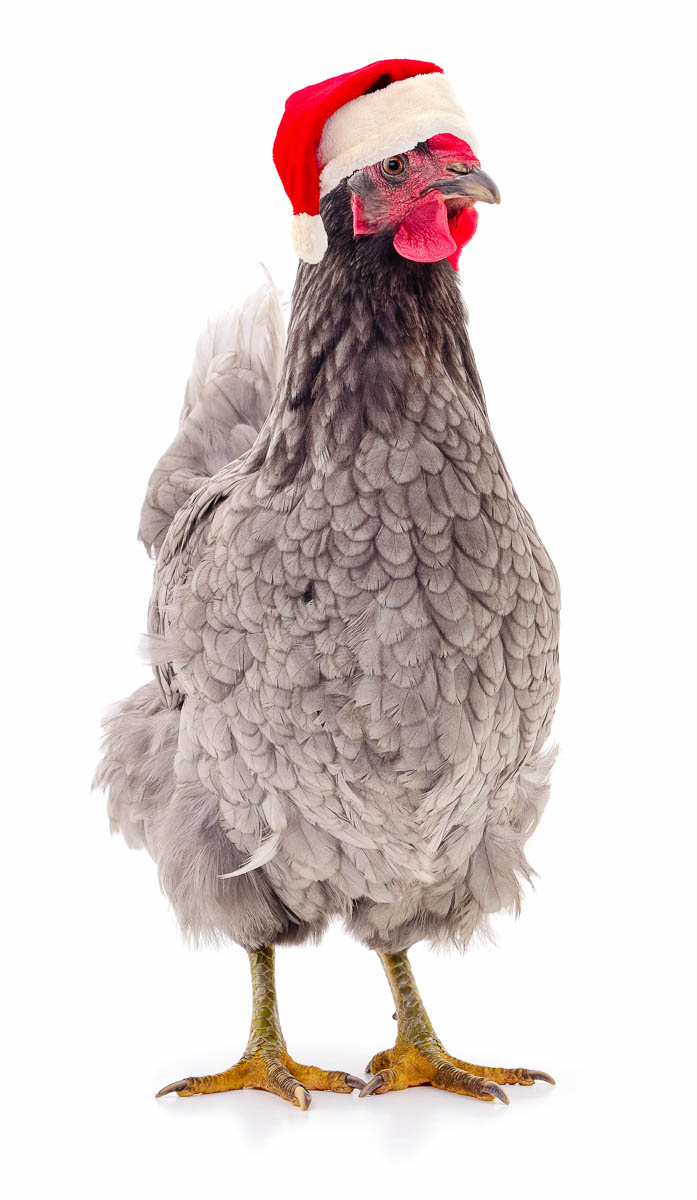


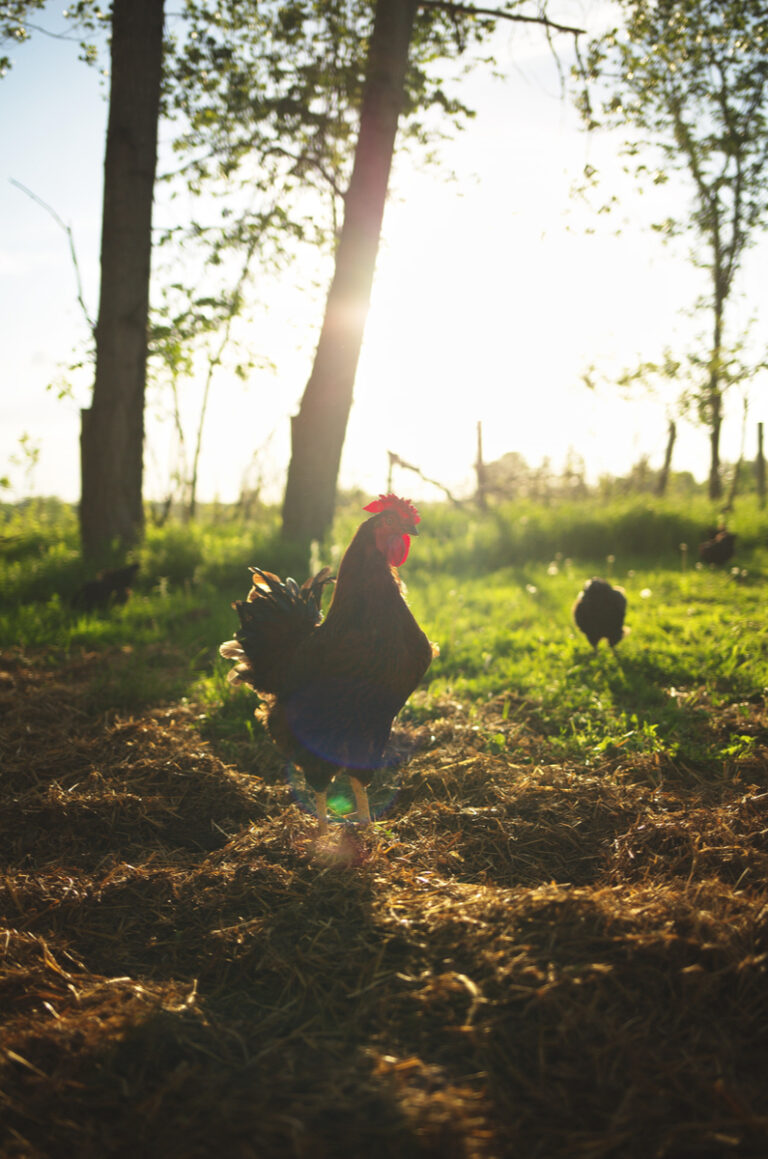

I have 2 pearl star leghorns and they are the sweetest things. Very inquisitive, talkative and love being loved on. They are always the first to run to me, even when I don’t have treats. They’re just over a year old now, lay large pink tinted eggs and rarely ever miss a day.
I’m just starting on my backyard chicken adventure. I think I got a bit carried away when looking at the chicks. I ended up with 8 Golden Comets, 8 ISA Browns, 5 Australorps (1 is a rooster), 2 Cuckoo Marans (but I think one is actually a Black Marans, there’s no barring), 1 Smokey Pearl, and 1 Easter Egger. I knew nothing about hybrids or pure breds. But I’m loving my chickens. They are so much fun to watch and one actually jumped up on my back to perch while I was petting another one. I love that they are so friendly.